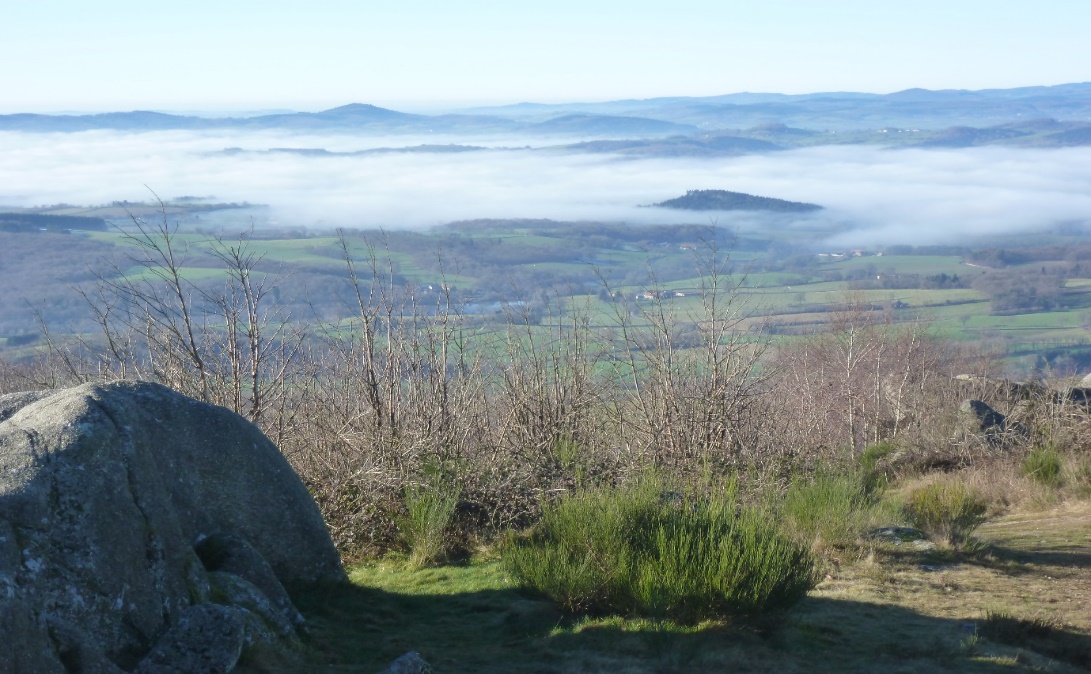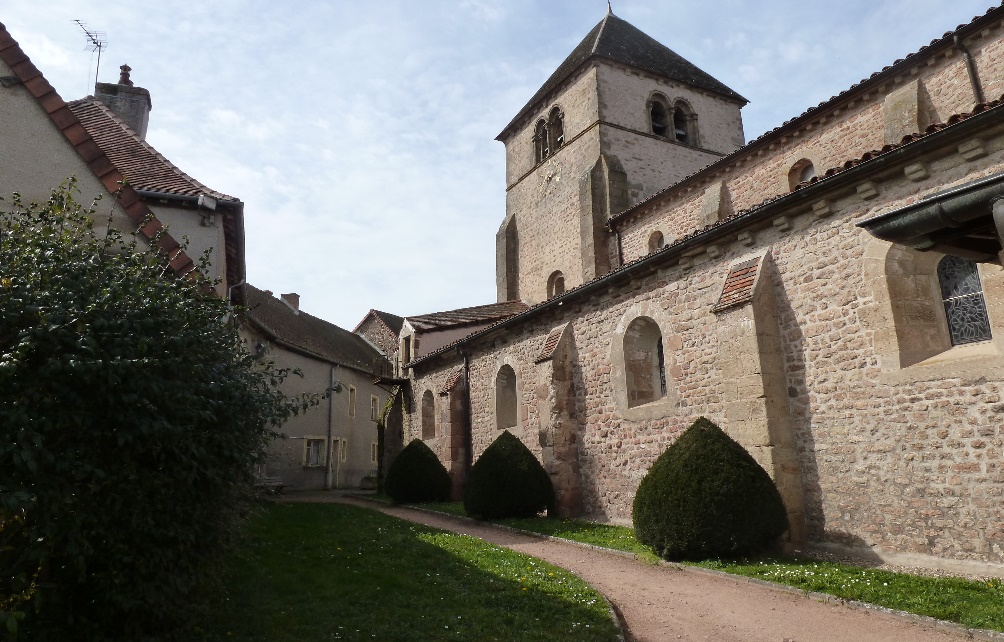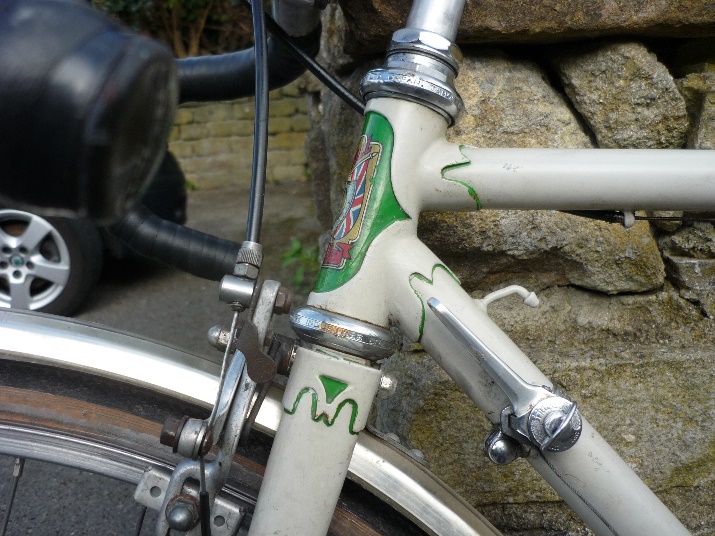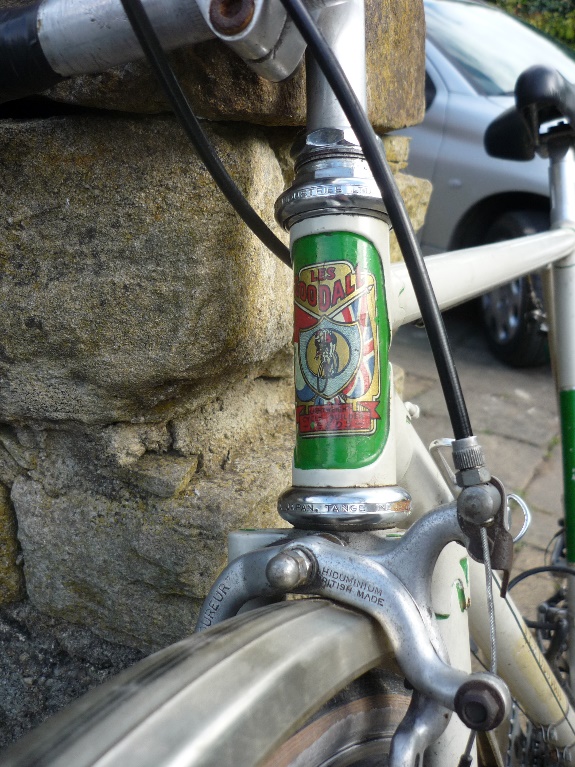Vol. 2, Issue 79 - January / February 2019
Posted: Wednesday 16th January 2019
Another year has slipped by and to my surprise I managed to clock some 8.5 thousand miles, albeit mostly on modern bikes – I know, I will wash my mouth out with carbolic soap! However, I ride five days most weeks and three are with groups of riders much younger than me so I need every help possible to keep up. The other two rides each week are with Patricia at the weekends and are at a more civilised pace. Having said that I have not resorted to an electric motor yet although I watch each new addition to that market and feel that they are slowly getting to what I would consider.
Apart from my own weekly rides, our local V-CC section has a ride most months which Patricia and I join in. We also travel away out of Cambridgeshire to a few other classic rides each year. First, we always book the Reading Lightweight Ride, which was the only available classic lightweight ride in the UK many years ago when we first had classic machines. Back then they would get a regular turnout of between eighty and a hundred riders. Nowadays there are so many lightweight events, often clashing dates, so the Reading Ride now seems to have settled in at about fifty or so, but it is always the first entry in our diary – by my calculation it will be 19 May in 2019 and we have a Cambridge Lightweight Ride the week before (12 May) which is incorporating the Ephgrave Ride this year.
We have various routes for Cambridge V-CC rides but this year for the lightweight ride we are using a really flat area with many of the miles on a disused rail line which has a new guided bus system on it complete with a beautifully smooth tarmac cycle path alongside. The level terrain will allow me to ride my road/path Ephgrave (below) which is on 64” fixed and has sprints, hence the spare tubs strapped to the saddle with a toe strap in true 50s style. Our last few Ephgrave Rides have been over a hilly course so I haven’t ridden this machine although I may well have been able to manage without gears, but when leading a ride one can’t risk it.
These flat routes are also useful for owners who have a machine fitted with gears which they may not be too confident with – the Campagnolo Paris/Roubaix comes to mind so fingers crossed we may see one in action next year. As the change on this gear involves leaning back and releasing the quick-release lever on the seatstay for the back wheel, and then pedalling backwards to change the gear with either a second movement of the lever or another lever alongside the first, depending on the model. When the change is done one then has to re-lock the quick-release before pedalling forwards again. It must be a mind-bending exercise on the flat but on a hill one wonders how momentum is kept up enough during this lengthy procedure. Mere mortals such as myself would change gear early before starting the climb but professionals in the day must have used them in anger and under pressure.
To build this machine I managed to find a pair (one at a time) of the Airlite large-flange hubs anodized blue. They are laced to a pair of Fiamme Red Label sprint rims and spoked with 15/17 double-butted spokes, classic wheels of the 50s. The anodised Airlite hub has a resonance with cyclists from the late 40s and early 50s as Reg Harris always had red anodised hubs on his track machines and they became synonymous with him. Both Reg and Eileen Sheridan were idols in a time when there was not much good news about. Very different to this year when three different UK riders won all three of the major tours, Giro d’Italia (Chris Froome), Tour de France (Geraint Thomas) and the Vuelta a Espana (Simon Yates).
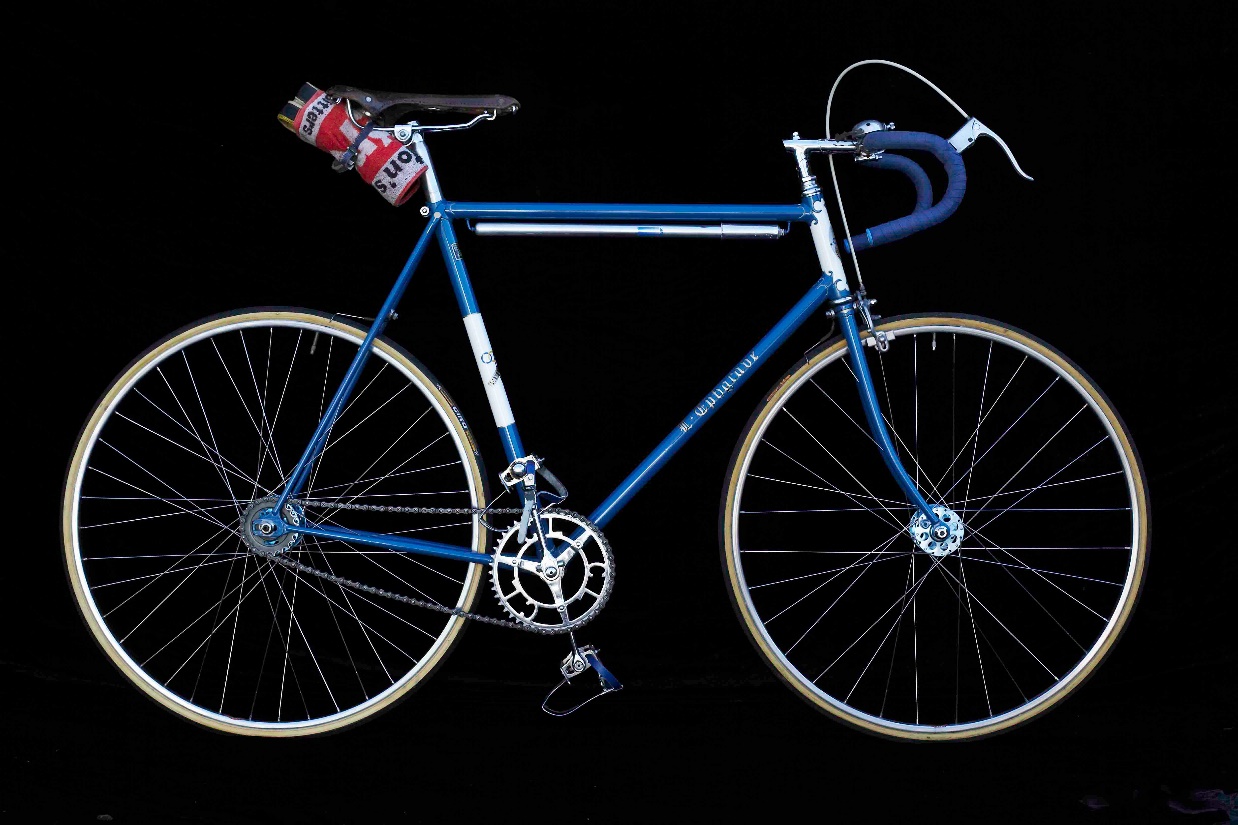
In another vein, I have a single right-hand Campagnolo gear lever on my R O Harrison which always works perfectly until I am climbing a hill in a group when, without fail, it slips down one cog from the largest. Unfortunately it doesn’t necessarily sit on the cog but lets the chain slip just at the point when maximum drive is needed. The lever has a ‘starred’ washer under the central bolt which I have read is the cure for this problem. This bolt had a screw slot head originally but this meant that I always had to carry a stubby screwdriver so I ‘upgraded’ it with a wingnut bolt. The gear still slips and the wingnut is as tight as I can get it. I have lots of Campag lever parts in a box but are loath to change parts as it could make matters worse. Sadly, the Campagnolo levers are notorious for slipping and when Simplex brought out the Retrofriction lever many professional riders switched to them even though they were in teams sponsored by Campag.
A good friend, Terry Kearns, of the North Road Section of the V-CC produces a monthly newsletter for their section. It brought back old memories of time trials in the post-war era when he reproduced race details for the Luton Wheelers CC 12-hour time trial in 1937. It was headed ‘Private and Confidential’ as events organised under the auspices of the Roads Time Trial Council were held in utmost secrecy, starting not long after dawn, clandesting locations, and the courses defined by a secret code worthy of MI5. Competitors were to be completely clothed from head to foot in black ‘so as to be ‘inconspicuous’ and for this event the first rider was off at 04.01!
What particularly interested me were the details of the food and drink to be handed up to the riders at various feeding stations during the day. They included, for drinking: tea, raw egg whipped into milk, and a milk and soda mix. To eat: rice and raisin pudding (would be handed up wrapped in paper), fruit and custard, currant bread and butter, cheese and tomato sandwiches, egg and tomato sandwiches, bananas, and oranges.
You may be puzzled by the mention of rice and raisin pudding, we used to make our own for events of more than 25 miles. I don’t know how international rice pudding is but it is made by heating rice in milk with sugar, perhaps a dash of cream and some nutmeg for flavour. Normal humans would eat it at a table after a meal, hot and with a spoon as it was quite liquid. The cyclists method was to mix in the raisins and boil and boil the pudding until it became solid, cut it up into squares or rectangles, wrap it in greaseproof paper and carry it in the jersey pocket.
Before a race, another good friend of mine would break a raw egg into a glass of milk as offered in the time trial above, he would then down it in one, which was something I could never bring myself to do. By this time, I had become a vegetarian in homage to Dave Keeler and his team from the Vegetarian Cycling and Athletic Club. In one event I was handed up a drink by a helper in a crisp white shirt; it was Bovril (a meat extract loved by some and hated by others). As soon as it hit my taste buds I sprayed it out of my mouth which, sadly, was the end of the crisp white shirt, in my defence I had asked for tea: luckily this was about fifty years before I became a Darjeeling tea addict as it would not have gone down at all well if one had shouted Darjeeling tea without milk please. I would guess that 99.5% of all tea drunk would have been what is known in the UK as ‘builder’s tea’, which was stewed black and then diluted with milk and two sugars to make it drinkable.
What a difference to today when riders compete on a diet of flavoured gels and energy drinks.
I do read a couple of other website forums to get some feel as to what is going on elsewhere in the classics scene. On one website it seems as if the whole classic cycling world is converting their machines to 650B wheels fitted with fat tyres. This is obviously not true, but it just happens that the people doing this conversion frequent this site. Some years ago we wished to convert one of Patricia’s bikes, custom built with 700 wheels and 23mm tyres (no clearance for even 25) to a winter bike with guards or fenders as they are also known outside the UK.
We thought that the only way to do this would be to convert to 650, so duly purchased a pair of such wheels and changed the brake stirrups for long reach. We purchased a set of guards but found that the gap between the wheels and the guards was far too great. To try and camouflage this ugly looking gap I spaced the guards to reduce the gap by half but it still looked completely wrong. We persevered for a while but the long-reach brakes were so inefficient it was just a step too far.
The bike just looked out of proportion and so different to a classic of the era, although this bike was only about 10-years old. I know I have a thing about wheels (must have 15/17 spokes with the correct spoking) and their relationship to the frame. Not only me, see this piece. With the Ephgrave shown above, the frame would have been built for 27” HP training wheels and 700 sprints for racing – here it is fitted with sprints in a racing build and the gaps are just about at their maximum for my eye.
The end of the story is that we dismantled the updates and sold the wheels, re-built the machine with the original wheels and fitted some of the make-do winter guards made for this purpose. There are breaks in the guards at frame points with a metal strip joining the two halves.
Cycling in Burgundy – the Canal du Nivernais, other possibilities and some steeper bits
Following on from the bumpy Canal du Midi adventures described in the last edition, I got in touch with Peter to describe the opportunities a little closer to home, well, mine at least; I live here. The beautiful Canal du Nivernais can be followed from Auxerre, on the river Yonne, to Decize, on the Loire. It’s great cycling and your panniers won’t bounce off.
As with all the routes described in this article, you will find small historic towns and villages, peaceful countryside, 11th and 12th century churches, rural châteaux and delicious local produce; after all, this is Burgundy…
As the canal often follows the valley of one river or another and, quite frequently, uses the river itself the problem of an endless straight towpath is avoided along many stretches and four day’s lovely cycle touring can be achieved. The towpath often goes over the bridges instead of under so you even have the challenge of the occasional climb!
The towpath surface has been specifically designed for cyclists. I used 700×25 road tyres on a 1959 Claud Butler Olympic road/path using a single speed freewheel set-up and loved every minute (no, it’s not a period restoration so I won’t be presenting it in detail here, it’s simply my towpath bike. I have a New Allrounder that is more period “correct”).
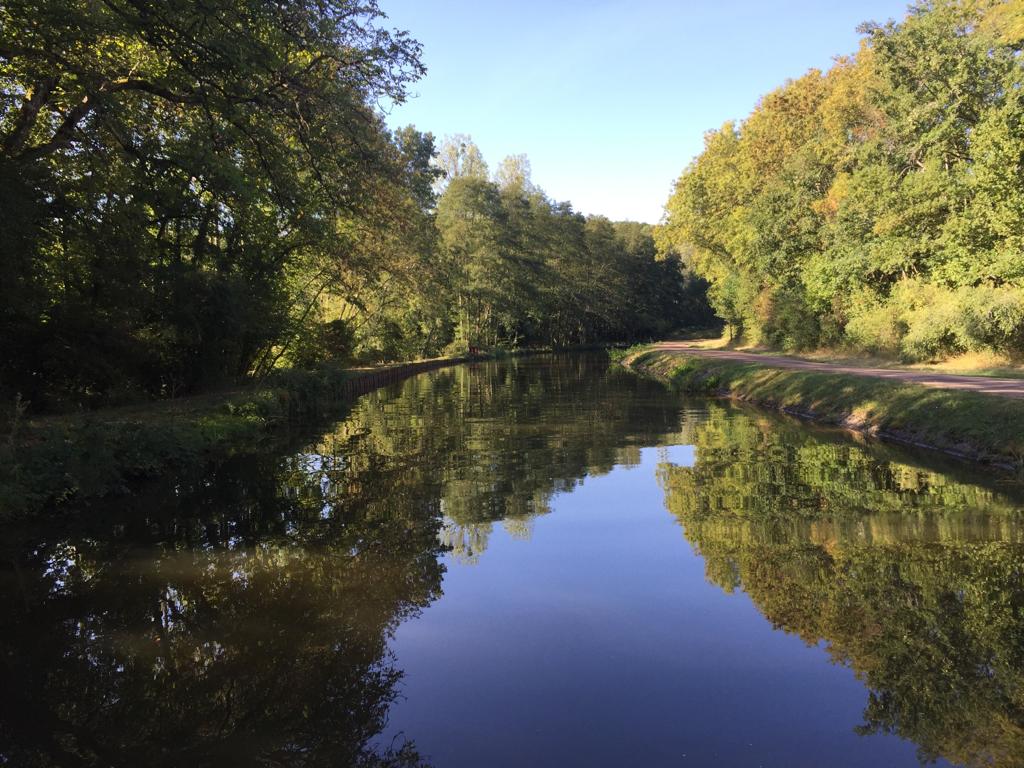
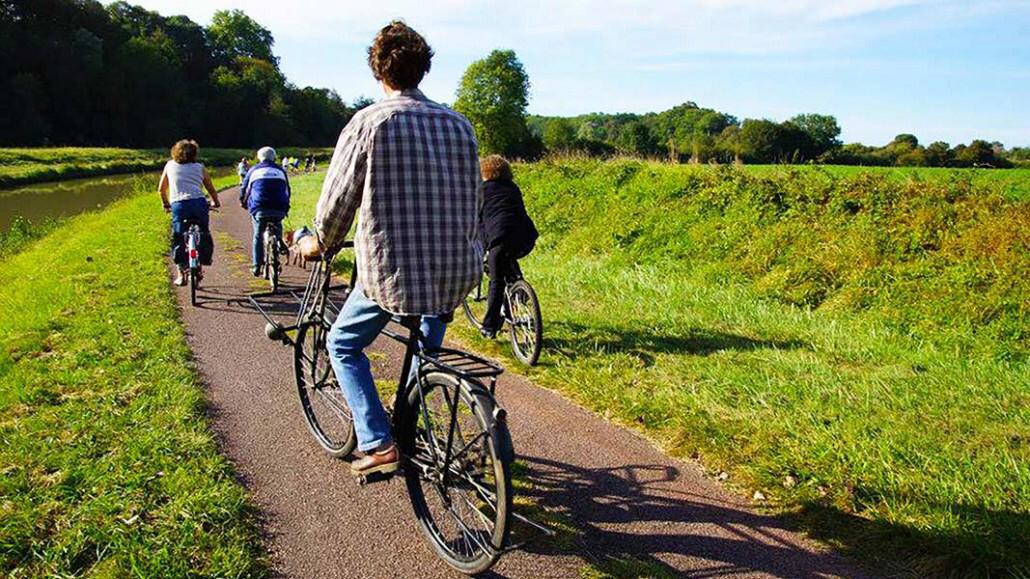
If you want to explore a bit more or break your journey I would suggest stopping at Châtillon en Bazois. Close to the centre of this little town, near the canal basin, you can find Greg and Jo’s café and bike repair/hire shop. They run a charming B&B nearby so you can explore the gently rolling Bazois countryside before continuing down to Decize,
Once in Decize, crossing the Loire allows you to find the Canal Latéral à la Loire. Either the towpath or nearby small roads form the basis for this section of the great EuroVélo 6 route (Atlantic to the Black Sea!). You can prolong your adventure by heading east (it takes one day) on this route to reach Saône et Loire, one of the best cycling destinations in France.
Here, there is a whole network of traffic-free “voies vertes”, usually on towpaths or old railway tracks. For chilling out there is nothing better than pedalling alongside a beautiful water-course on a smooth surface. Wildlife is abundant, especially herons and great egrets; whilst out on a clubrun, I saw dozens of egrets fishing on one shallow stretch of the Loire. This was on the network of further routes using small backroads.
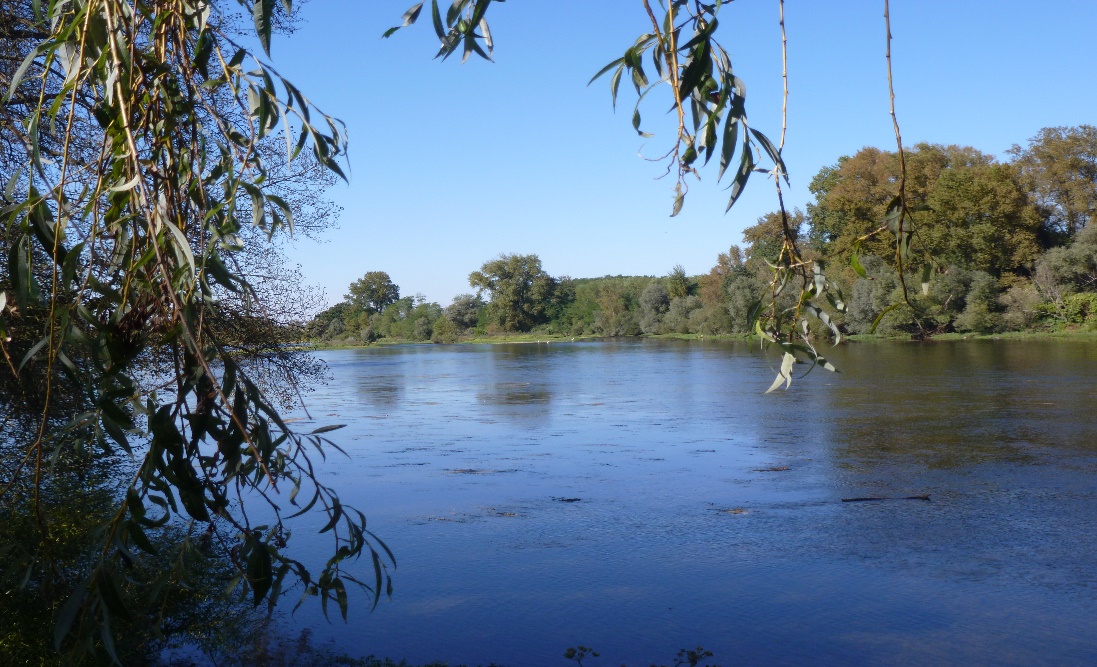
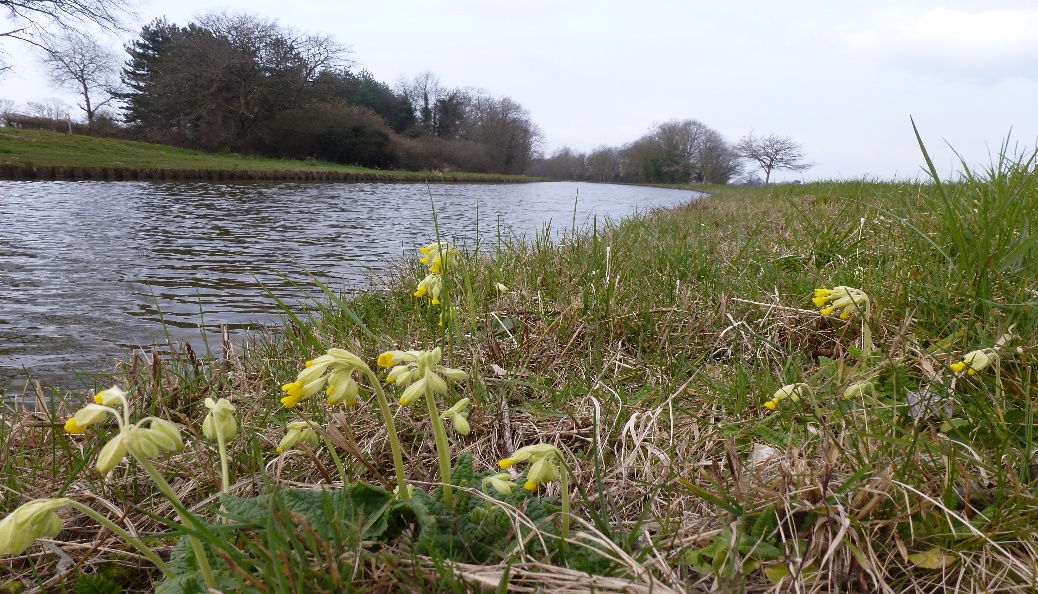
For those who prefer to climb a bit more I would suggest a series of seven road circuits which all start from the church in Issy l’Evêque (find them on https://veloenfrance.fr/) These vary from about 50km to just over 90km. The idea was to cover local points of interest whilst only using quiet backroads. Some routes are rolling, others quite challenging with some stiff climbs on small roads, often climbing up through woodland. When I say “quiet” I mean that you will meet more tractors than cars and not many tractors at that. The area is largely undiscovered working countryside. I recently cycled 25 km on such roads without meeting a single motor vehicle. There is a very nice B&B in Issy l’Evêque which also has a collective gîte for groups such as cyclists or walkers, (https://www.facebook.com/domainedestaupieres/).
If you hanker after a bit of rough stuff, next year sees the opening of the Grande Traversée du Massif Central (GTMC) but all the signage is already in place. This is an epic off-road route starting in Avallon in Burgundy and heading via all the regional parks en route to the Mediterranean. It is a 30-day ride.
If you have a little less time/energy, around Issy l’Evêque there are A and B routes providing the unique opportunity on the GTMC of a loop around the village. I estimate that four great days could be spent on this loop, covering typical rolling granite terrain in the south Morvan. The surface varies from small backroads to stony tracks, so either a tourer with heavy-duty tyres or a cyclo-cross bike is recommende and don’t forget the small chainring.
Should you be feeling sociable (it happens) there is the opportunity to join the clubruns with the Cyclo Club de Bourbon-Lancy. This is a large touring club with everything from energetic outings to the Monday “Vélo en douceur” run. This is an initiative to attract less experienced cyclists or those seeking something gentler. At the start of the season runs are around 40km but the goal is the late summer 100km outing. Being in France, all runs end at the clubhouse where the chilled rosé awaits.
Having read the piece on mudguard fitting in Lightweight News 78; Mike Dawes, too had been winterising his road-path Gillott, in his case to ride the Hampshire Lightweights season closing event held in October of last year:
I agree that track ends aren’t really compatible with mudguards and my solution was to keep the rear stays longer than would appear to be necessary. I then slipped a short length of plastic tubing over the ends of the stays. To change a wheel I slightly undo the nuts on rear bracket and gently pull the mudguard back; this is where the tubing helps so that the stay doesn’t detach from the bracket, nut and bolt – and nothing gets lost in a rain-soaked gutter at the side of the road.
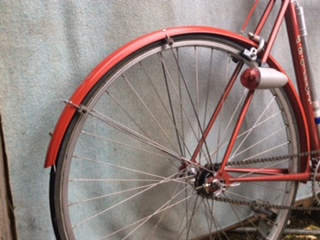
When fitting the guards I saw that the rear reflector was broken so I left it off and used the hole in the guard as a mounting point for a tyre saver. The rear light by the way contains a modern LED!
You mentioned the large eyes on the seat stays of your Paris. I bought a lovely FW Evans frame at the Reading Lightweights Ride earlier this year and Rikki Pankhurst is now building it up for me. In my research I saw in an Evans’ brochure that he made a point of using proper mudguard eyes and not curtain rings! Rikki told me that this was a direct remark against one of their contemporaries but I regret that I can’t remember whom. (Ed. – I have always thought that is just what they look like.)
Neil Dowie sends a picture of an old friend Paul Tomlinson Becontree wheelers riding what he believes to be one of two twin seat tube frames built by Vic Edwards under the name of his own company – Rondinella. Vic was a prolific and very respected builder who built for many well-known marques. The split seat tube can easily be seen, Neil thinks this was early 1980s:
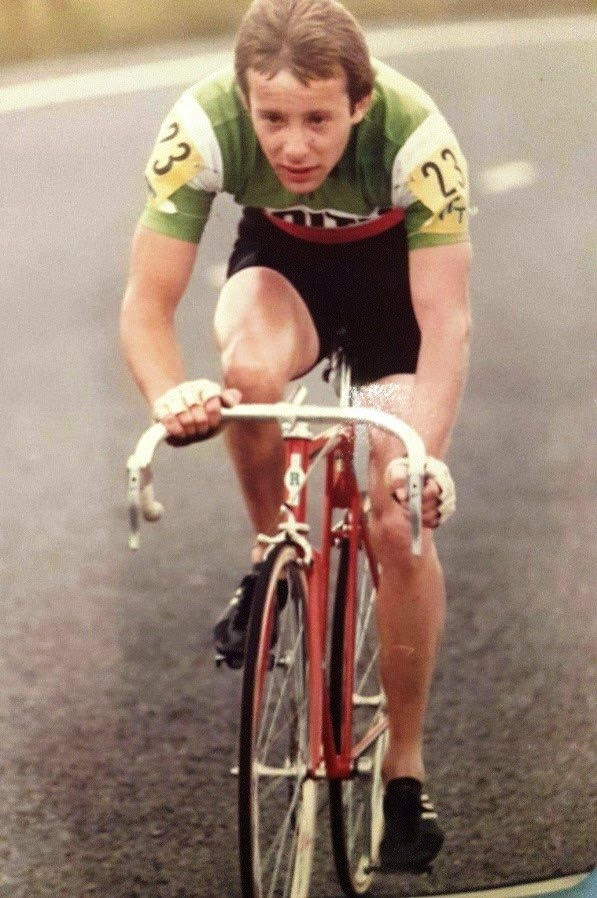
You may be interested in the attached photographs of a small-framed bike I bought in a second-hand shop in Leeds several years ago. An old cycling friend identified it as a Les Goodall, a frame builder back in the 50s in Hunslett, south Leeds, in a shop that now lies beneath the MI, which flattened the area. I had to replace some of the kit on the bike, but I was put in touch with Mr Goodall and he was kind enough to send me some of his remaining transfers. I sold the bike some years ago, but before then, my wife, for whom the frame was a good fit, used it for years. I’ve never come across another Goodall, and wonder if many have survived. If anyone has more information on Goodall, such as, did he build his own frames maybe we could amass enough information to create a page on the website under ‘Classic Builders’. Contact: bartholomew656@btinternet.com
Some years ago I sent you some material about Les Ephgrave and his wonderful bicycles. Here’s another little piece of background information which you might find interesting.
Les told me in 1963 or 1964 that during the Second World War he and other cycle builders were employed building special reconnaissance Spitfires. They were specifically recruited because of their skills and experience in welding and/or silver soldering thin tubing. It was my understanding that Reynolds 531 (‘Five-three-one’) was chosen by the Air Ministry for these special hand-built Spitfires.
The article cited below prompted my recall:
Posted: Wednesday 16th January 2019
This article appears in the following categories.
Upcoming Events
Whether you are looking for a gentle social meet up, or a 100-mile ride browse the community’s upcoming events and plan your next weekend outing.

